Wilhelm Hecht (1843 Ansbach - 1920 Linz/Danube) after Moritz von Schwind (1804 Vienna - 1871 Munich): Wieland the Smith, 1850, EtchingTechnique: Etching and Copper engraving on China paper, rolled-on on PaperInscription: At the lower part signed in the printing plate: "M. v. Schwind Fect / W. Hecht sct.". Inscribed in the plate at lower left: "M. v. Schwind fect.", signed in the plate at lower right: "W. Hecht sct.", inscribed at lower right: "Wieland der Schmied.".Date: 1850Description: Few artists of the 19th century indulged in bizarre fabrications as devotedly as Moritz von Schwind. His pictorial worlds populated by fairy-tale creatures indulge in grotesquely heightened embellishment that stops at neither the staff nor the surroundings. His Rbezahl is an apt example: the cranky hermit with his lance-beard and huge Hercules club roams in his clogs through an enchanted forest in which every tree has as much character as Rbezahl himself. The gnarlier and more intricate, the better. This absorption in the jumble of lines, which condense into ever more complex structures, can also be found in the other two prints shown here, and it is to Wilhelm Hecht's great credit that he has understood precisely this way of narrating with each individual line. In Wieland der Schmied (Wieland the Blacksmith) we find it in the rocks, and in Sankt Wolfgangs Kirchenbau (St. Wolfgang's Church) it is the lush foliage and the individual branches that, in their dynamism, become independent personalities. But it is precisely such a sheet that shows Schwind's great talent for trenchant depiction. The devil struggling and panting, sticking his tongue out at the viewer, is congenially contrasted with the saint, who, at peace, holds the trowel at the ready and has almost become a building decoration himself. The same applies to Rbezahl, who in his quirky wanderings reveals so much carefree abandon, which Schwind illustrates with small details such as the socks that have slipped down or the bones in his trouser pocket. All three of Schwind's paintings, after which Wilhelm Hecht created the present prints, were acquired by Adolf Friedrich Graf von Schack for his collection. Rbezahl and St. Wolfgang belonged to a group of 25 paintings that he was able to buy directly from the artist in 1869. Schwind called them travel pictures and created them without a commissioner for a private occasion. This may also explain the unconventional appearance of these pictures. Here he was able to abandon himself entirely to his lust for the fantastic and indulge in whimsical forms and pictorial worlds.Keywords: 19th century, Romanticism, Mythology, Germany, Size: 32,2 cm x 26,1 cm (12,7 x 10,3 in), Plate: 27,5 cm x 19,8 cm (10,8 x 7,8 in), Depiction: 18,6 cm x 13,7 cm (7,3 x 5,4 in)Condition: Very good condition. Age-appropriate.
Wilhelm Hecht (1843 Ansbach - 1920 Linz/Danubio) dopo Moritz von Schwind (1804 Vienna - 1871 Monaco): Wieland the Smith, 1850, AcquaforteTecnica: Acquaforte e incisione su rame su carta China, arrotolata su cartaInscrizione: Nella parte inferiore firmato nella lastra di stampa: "M. v. Schwind Fect / W. Hecht sct.". Iscritta nella lastra in basso a sinistra: "M. v. Schwind fect.", firmato nella lastra in basso a destra: "W. Hecht sct.", iscritto in basso a destra: "Wieland der Schmied.".Data: 1850Descrizione: Pochi artisti del XIX secolo si abbandonarono a bizzarre invenzioni con la stessa devozione di Moritz von Schwind. I suoi mondi pittorici popolati da creature fiabesche indulgono in un abbellimento grottescamente accentuato che non si ferma né al personale né ai dintorni. Il suo Rbezahl è un esempio appropriato: il burbero eremita con la sua barba di lancia e l'enorme clava di Ercole si aggira nei suoi zoccoli attraverso una foresta incantata in cui ogni albero ha tanto carattere quanto Rbezahl stesso. Più sono nodosi e intricati, meglio è. Questo assorbimento nell'accozzaglia di linee, che si condensano in strutture sempre più complesse, si trova anche nelle altre due stampe qui presentate, ed è un grande merito di Wilhelm Hecht aver capito proprio questo modo di raccontare con ogni singola linea. In Wieland der Schmied (Wieland il fabbro) lo troviamo nelle rocce, e in Sankt Wolfgangs Kirchenbau (La chiesa di San Wolfgang) è il fogliame rigoglioso e i singoli rami che, nel loro dinamismo, diventano personalità indipendenti. Ma è proprio un tale foglio che mostra il grande talento di Schwind per la rappresentazione incisiva. Il diavolo che si dibatte e ansima, tirando fuori la lingua verso lo spettatore, è congenialmente contrastato con il santo, che, in pace, tiene la cazzuola a portata di mano ed è quasi diventato egli stesso una decorazione edilizia. Lo stesso vale per Rbezahl, che nel suo bizzarro vagabondare rivela tanta spensieratezza, che Schwind illustra con piccoli dettagli come i calzini scivolati o le ossa nella tasca dei pantaloni. Tutti e tre i dipinti di Schwind, da cui Wilhelm Hecht ha creato le presenti stampe, furono acquistati da Adolf Friedrich Graf von Schack per la sua collezione. Rbezahl e St. Wolfgang appartenevano a un gruppo di 25 dipinti che egli riuscì a comprare direttamente dall'artista nel 1869. Schwind li chiamò quadri di viaggio e li creò senza un committente per un'occasione privata. Questo può anche spiegare l'aspetto non convenzionale di questi quadri. Qui ha potuto abbandonarsi completamente alla sua brama di fantastico e indulgere in forme stravaganti e mondi pittorici: xIX secolo, Romanticismo, Mitologia, Germania, Dimensioni: 32,2 cm x 26,1 cm (12,7 x 10,3 in), Piastra: 27,5 cm x 19,8 cm (10,8 x 7,8 in), Rappresentazione: 18,6 cm x 13,7 cm (7,3 x 5,4 in)Condizioni: Ottime condizioni. Adatta all'età.
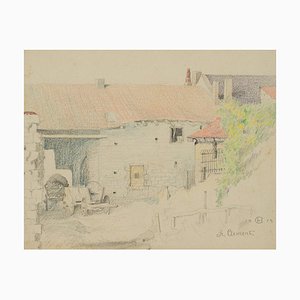
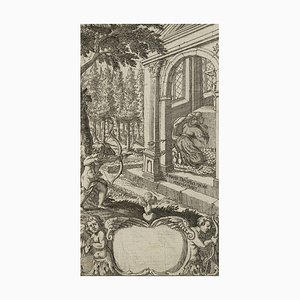
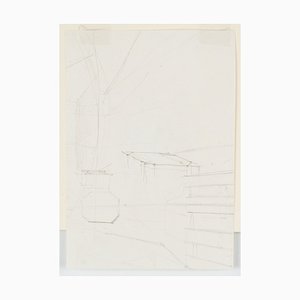
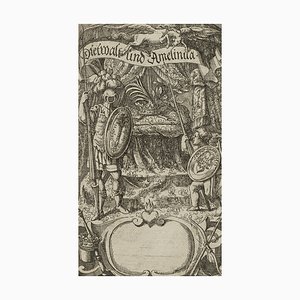
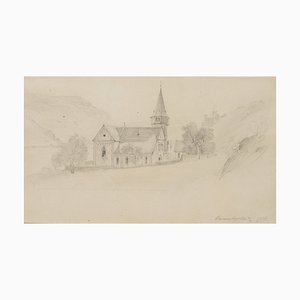
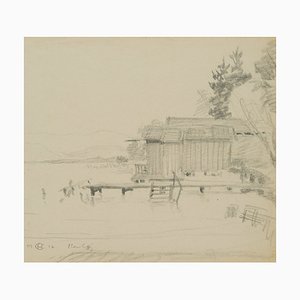
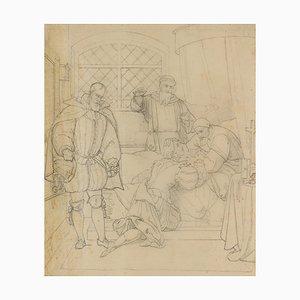
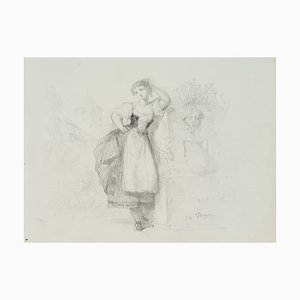
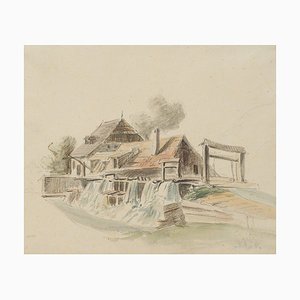
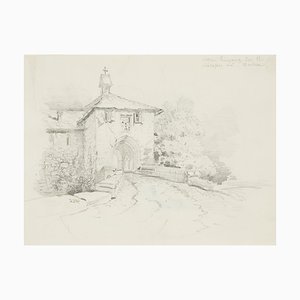
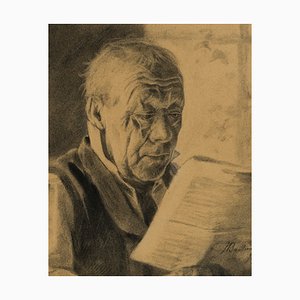
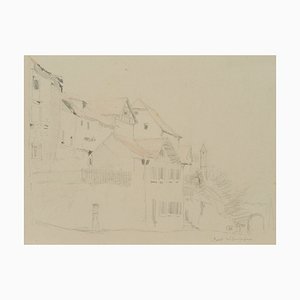

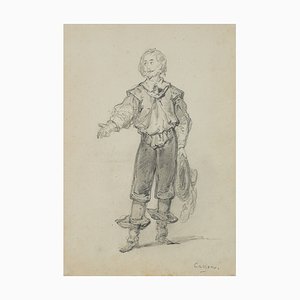
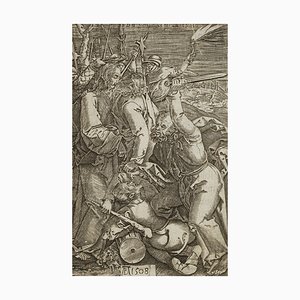
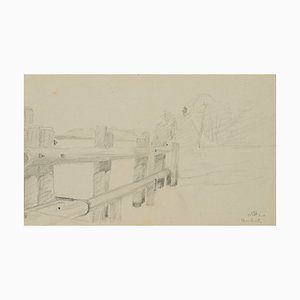
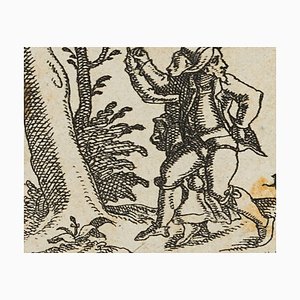
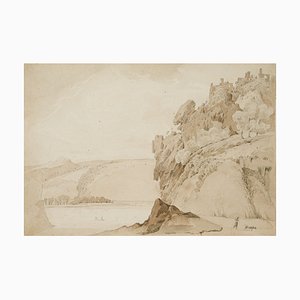
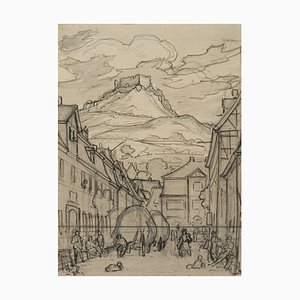

Contattaci
Fai un'offerta
Abbiamo notato che sei nuovo su Pamono!
Accetta i Termini e condizioni e l'Informativa sulla privacy
Contattaci
Fai un'offerta
Ci siamo quasi!
Per seguire la conversazione sulla piattaforma, si prega di completare la registrazione. Per procedere con la tua offerta sulla piattaforma, ti preghiamo di completare la registrazione.Successo
Grazie per la vostra richiesta, qualcuno del nostro team vi contatterà a breve.
Se sei un professionista del design, fai domanda qui per i vantaggi del Programma Commerciale di Pamono